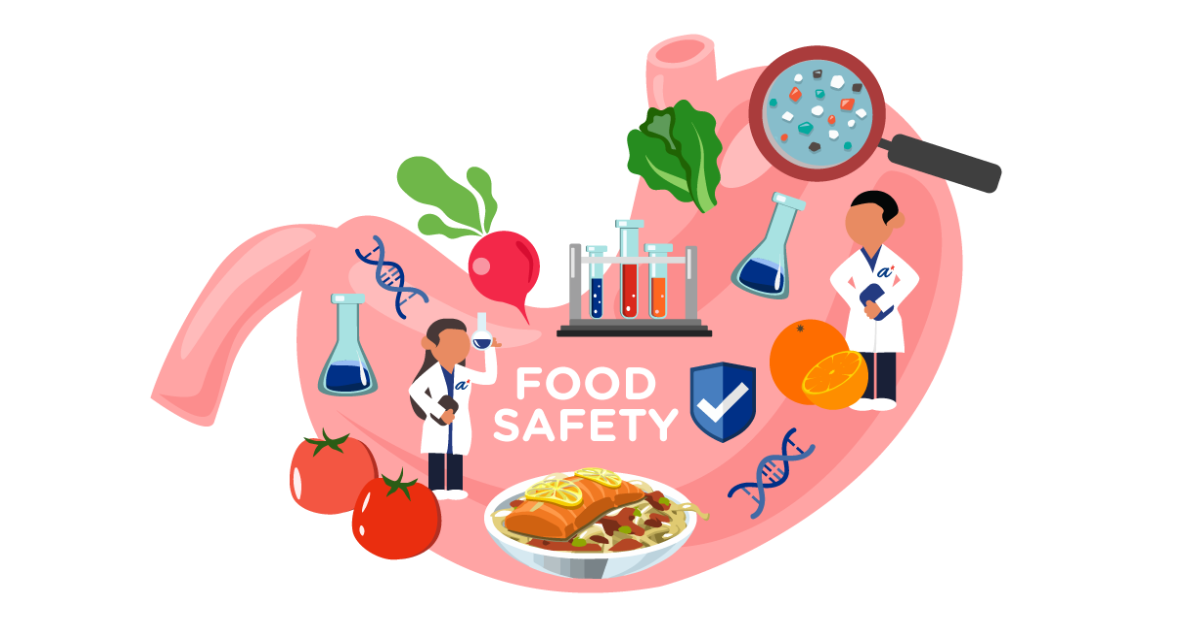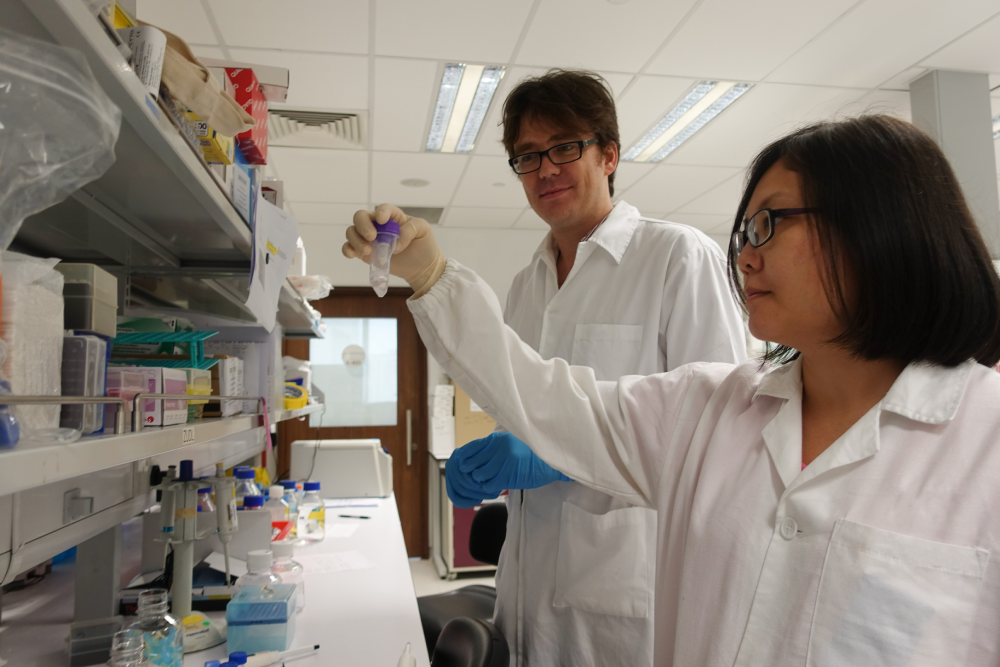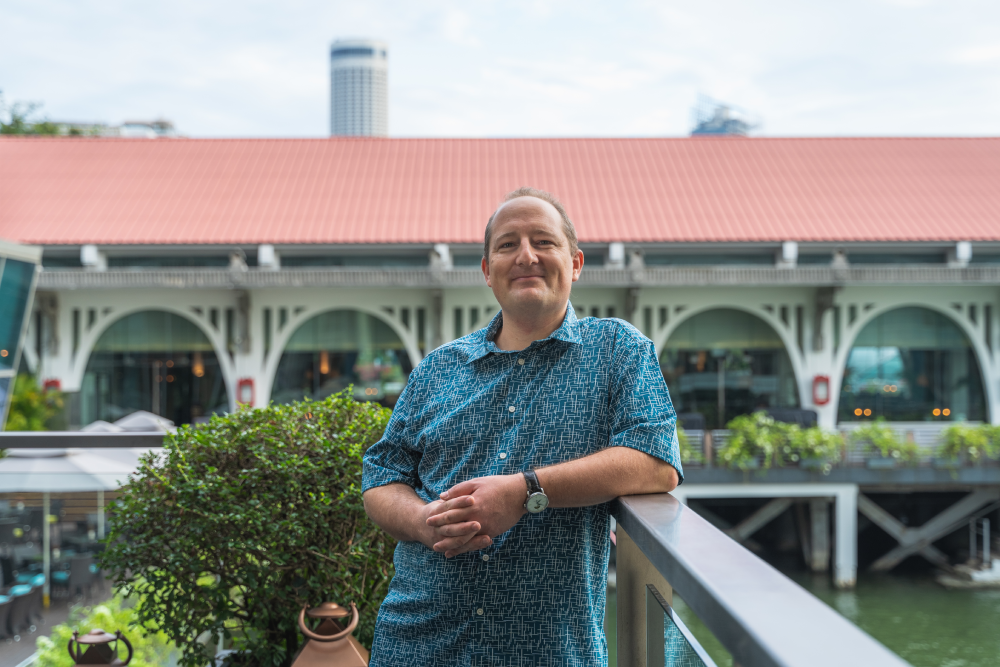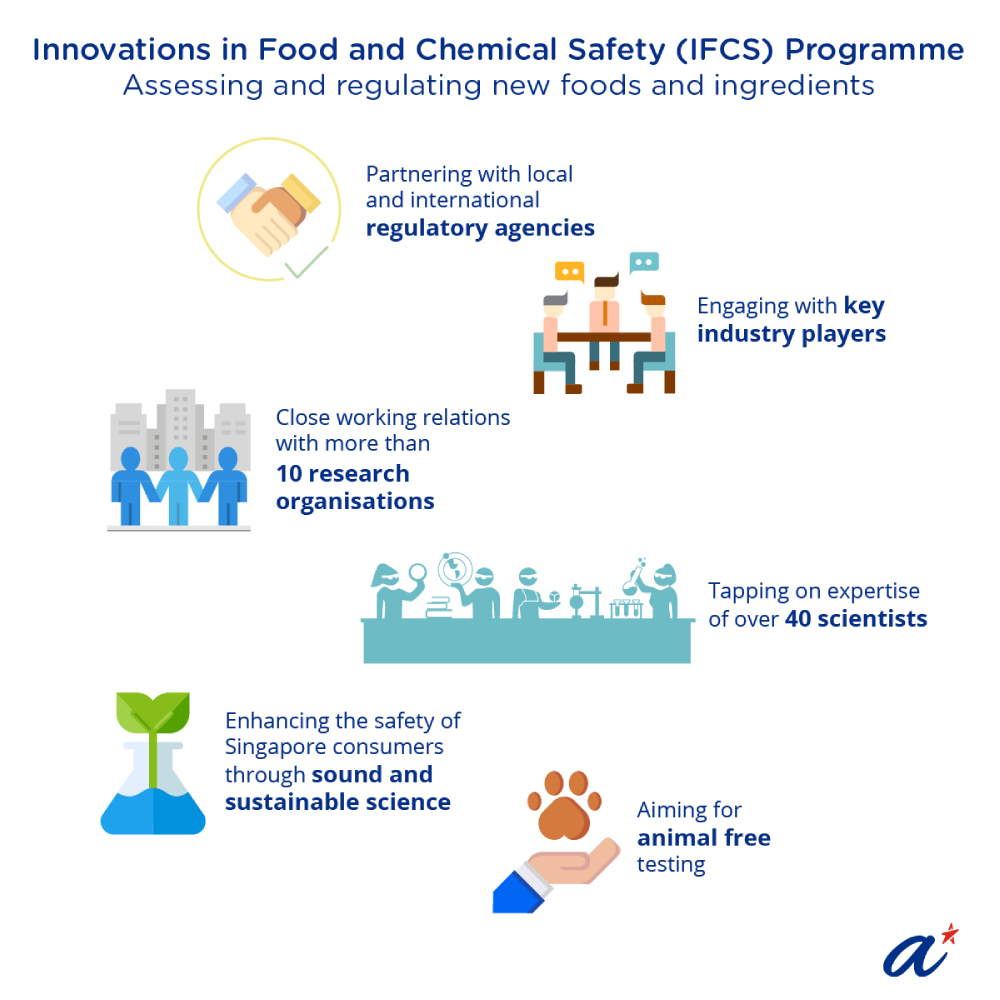A*STAR NEWS
Gut instinct: The science behind food safety starts in the stomach
A*STAR’s food and chemical safety scientists are transforming the global food safety scene, one ingredient at a time.

Call it gut instinct, but how your stomach and intestines digest the food you consume – from destroying toxins to absorbing nutrients – influences whether an ingredient is harmful or beneficial. With help from science, the entire process in your digestive system can now be studied in the lab with 3D intestinal models made from human epithelial cells.
The 3D models provide scientists at A*STAR’s Innovations in Food & Chemical Safety (IFCS) Programme a clearer picture to assess how chemicals affect health, and the extent of possible damage done to the genetic make-up of cells.
In particular, the focus is on nanoparticles that are becoming more widely used in the food and consumer care industries. They can be found in food, either as ingredients like the whitening agent titanium dioxide, or contaminants such as micro and nanoplastics.
This study is a key project under the IFCS programme that aims to improve food and chemical safety in Singapore. A big part of this effort lies in risk assessment, which determines the inherent toxicity of an ingredient and the body’s level of exposure to it.
It also represents a shift away from the conventional animal-testing methods for food safety, with the new 3D intestinal models expected to offer more accurate results.
Aside from the models that are used in tandem with other gut study methods, the team is also developing new methods to analyse the potential hazards of chemicals and in turn reduce the level of exposure to humans.
“By looking at how much materials are used in products, how much people eat and what their exposure is, we can do calculations to determine what the intake is and how much (of the hazardous chemicals) someone is actually eating,” said Dr Benjamin Smith, Director of IFCS.
“By taking that information together, we can determine a margin of exposure and safety, and make sure that the level of materials causing effects is a long, long way away from any potential consumption exposure.”
 Genotoxicity of ingredients are analysed in the IFCS laboratory
Genotoxicity of ingredients are analysed in the IFCS laboratory
The recipe for safe food
The first step involves examining an ingredient’s inherent toxicity. This gives the research team valuable insights into the ingredient’s carcinogenic effects, for instance, and its capacity to trigger other chronic conditions like liver and cardiovascular diseases.
Once the hazards are identified, the team looks at the different end points of consumption. This includes studying an ingredient’s genotoxicity, or its potential damage to the genetic apparatus of cells, organs and tissues. Next comes the crucial stage of determining the concentration that would cause a certain level of damage to organ systems.
Creating an ecosystem that bears fruit
But research is only one piece of the puzzle in building the right tools to assure food safety. The other critical piece is collaboration with the right partners to solve the most pressing problems first.
Explaining the need for a consensus or risk research becoming irrelevant, Dr Smith said, “Sometimes there is a disconnect between academic scientists and industry scientists. We can all come in with excellent ideas, and we can all have good science… But if it is not what is needed, where is it actually going to go?”
For Singapore to fulfill its food security and safety plans, all parties must pull their weight. From farmers and food processing plants to research agencies and regulatory boards, everyone plays a crucial role in ensuring the safe handling, testing and consumption of food.
The 3D intestinal models, for instance, are being developed in collaboration with A*STAR Skin Research Institute Singapore, Nanyang Technological University and Singapore Food Authority (SFA).
By working closely with SFA, the IFCS Programme also aims to facilitate tripartite discussions between regulatory authorities, research scientists and F&B firms.
“We need to work together to drive safe product innovation and ensure more rapid product entrance into the market, benefitting all stakeholders in the ecosystem,” said Dr Smith.
“We cannot operate in isolation. The industry has to be aware of the needs of regulators, and regulators need to work with the industry to come up with the right sort of data to meet their requirements.”
 Fighting food adulteration requires group effort, says Dr Benjamin Smith, Director of IFCS
Fighting food adulteration requires group effort, says Dr Benjamin Smith, Director of IFCS
IFCS’ partnership with the Singapore Institute of Food and Biotechnology Innovation (SIFBI) also shows how collaborations can strengthen global food safety compliance.
Launched this year, SIFBI pulls together the relevant A*STAR research capabilities and will be a one-stop shop for industry players interested in food science and biotechnology innovations.
By working with SIFBI, Dr Smith hopes to create solutions that will appeal to global food suppliers who might otherwise skip the checks due to cost and operational constraints. The solutions include affordable, rapid testing techniques to analyse pesticide contaminants in food.
Improving assessment techniques at the suppliers’ end also ensures that food undergoes comprehensive testing before it is exported. This in turn reduces the pressure on food testing systems in importing countries such as Singapore, and boosts the quality inspection process as a whole.
As Singapore relies on R&D to improve food safety, it will also support the introduction of new and novel foods entering the market – cementing Singapore’s reputation as a leading agri-food and nutrition hub both in the region and across the globe.

Ultimately, IFCS’ edge lies in its ability to take a multi-centric approach to the food safety chain and address the needs of the industry.
“This science of understanding food safety, the improvement of risk assessment methods – all these can help us in revising and ensuring that the policies and decisions that ensure food is safe are built on solid science. It also allows us to be sure that we are making right decisions for the consumer,” said Dr Smith.
“As long as we have the discourse, and ensure that science drives these decisions, we can make sure food gets delivered safely and more quickly to the market.”
Stay tuned for the next installment of this Future of Food series. Next week, we showcase a young IFCS scientist working on the latest innovations in food safety.
Was This Article Helpful ?
A*STAR celebrates International Women's Day

From groundbreaking discoveries to cutting-edge research, our researchers are empowering the next generation of female science, technology, engineering and mathematics (STEM) leaders.
Get inspired by our #WomeninSTEM
